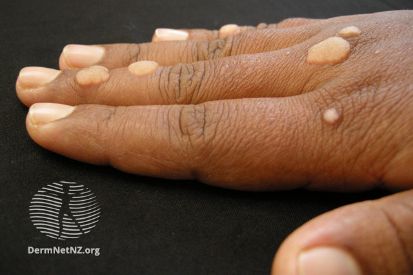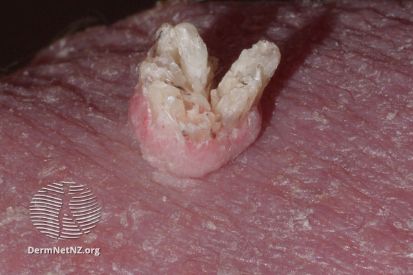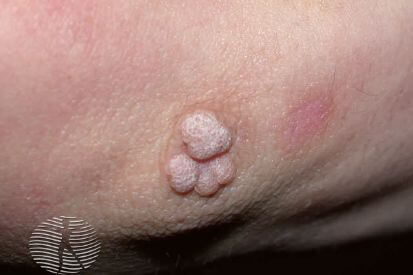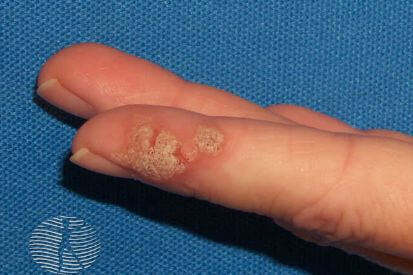Warts
Our dermatologists are experts in diagnosing and treating warts, utilizing methods such as cryosurgery or topical treatments to remove them and reduce the chance of recurrence. Contact Pinehurst Dermatology & Mohs Surgery Center to discover a tailored treatment plan that will help you achieve clear, smooth skin.
Examples of Warts




Symptoms of Warts
- Warts often appear as small, raised, and fleshy growths on the skin.
- Some warts have tiny, black dots (clotted blood vessels) that resemble seeds.
- Warts are usually painless, but they can cause discomfort, especially if located on weight-bearing areas like the soles of the feet.
- Warts may appear individually or in clusters, known as mosaic warts.
- Warts can be flesh-colored, pink, or slightly darker than the surrounding skin.
What Causes Warts?
- Warts are caused by the human papillomavirus (HPV).
- Warts are contagious.
Can You Prevent Warts?
FAQs for Warts
Yes, warts are contagious and can spread through direct contact with the wart or through shared objects like towels, razors, or shoes.
To prevent warts, avoid direct contact with warts, keep your skin clean and dry, avoid sharing personal items like towels or razors, and wear protective footwear in communal areas like pools or locker rooms.
Yes, warts can sometimes disappear on their own, but this can take months or even years. Treatment from a dermatologist can help remove them more quickly and reduce the risk of spreading.
Yes, warts can recur after treatment, especially if the virus remains in the skin. Multiple treatments may be necessary to fully remove them.
Warts can appear anywhere on the body but are most commonly found on the hands, feet, face, and genitals.
Watch: What are Wart Infections?
Treatment Options for Warts
- Cryotherapy (freezing): uses liquid nitrogen to freeze and destroy the wart. May require multiple treatments.
- Minor surgery: Wart tissue is cut away surgically and the area is cauterized (burned).
- Topical treatment of medications or films.
- Injections to stimulate the body's immune system to fight the virus, and others.
Featured Products

Baby Foot Moisturizing Foot Mask
The Baby Foot Moisturizing Foot Mask is a non-peel treatment formulated for immediate hydration. In just 10 to 15 minutes, the rich moisturizing components including Collagen, Hyaluronic Acid, and 14 natural extracts, are absorbed into the skin for extra smooth, soft feet. This is to be used at the end of a Baby Foot Peel AFTER peeling is finished, or any time in between treatments to maintain soft feet. 2.4 fl oz / 70 mL

CLn HandWash
Designed by dermatologists, this non-prescription cleanser is tough on microbes but easy on the skin. It can be used for frequent hand washing that can cause sensitive skin to over dry and crack. Openings in the skin lead to increased risk of infection. CLn HandWash is preserved with sodium hypochlorite, but includes glycerin so it can be used daily without irritation or dryin. 12 fl oz
